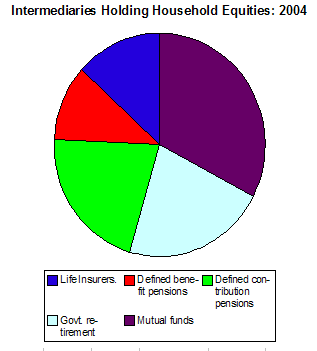Why ‘Defined Benefits’ Pension Managers Support Stock Buybacks
by John Schroy filed under Equities, Individual Investors, Fund Managers
The sponsors of ‘defined benefits’ pension plans controlled, as of December 2004, about US$2.5 trillion in equities belonging, indirectly, to the beneficiaries of these plans.
In December 2004, U.S. equities, even after the crash of 2000-2001, were still substantially over-valued.
(See: “Equity Values“)
In order for stock prices to reflect values that were customary for a century before the advent of stock buybacks, prices would have to drop between 20% (earnings basis) and 50% (dividend yield basis).
In the case of ‘defined benefits’ pension plans, this would represent a loss of between US$500 billion and US$1.2 trillion in market value of pension portfolios!
To put this in context, such an ‘adjustment’ would be equivalent to from 90% to 210% of before-tax corporate profits in 2004.
In another context, a fall in valuation to historical levels would be equivalent to from one- and to two-thirds of all receipts of state and local governments in 2004.



